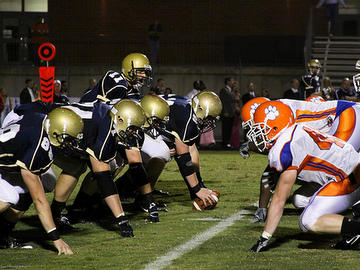
Section Branding
Header Content
High School Concussion Policies Change
Primary Content

The organization overseeing Georgia high school sports is more sharply defining its policies on head injuries for athletes. One change will allow football referees more leeway in making the call to pull a player from a game.
It’s because of growing concern over treating athletes for concussions, and recognizing symptoms of the injuries.
The Georgia High School Association points to recent medical studies that show only 3 percent of high school football players that suffered a concussion last season--actually lost consciousness.
And that was the previous measure referees used to determine when a player had to leave a game.
But GHSA executive director Ralph Swearingin says this season any concussion symptom would be enough:
“It’s non-negotiable. If there are observed things, the player has to come out for one play. The coaches have the responsibility to see that they get checked out.”
Tim Simmons manages the sports medicine program at Gwinnett Medical Center, and says that’s an important change:
“Loss of consciousness is not necessarily an indication of a concussion. There are signs we look for. 85-percent of all concussions go un-recognized. That’s a pretty scary statistic.”
Simmons says for a third straight year all of Gwinnett County football players are being tested through the Gwinnett Medical Center's ImPact testing program. He says at no cost to the schools, the research-based computer program captures a player's baseline cognitive reading. If a player later comes back with a concussion, new information from symptoms can be compared with baseline data to best direct medical treatment.
The Georgia High School Association says it remains up to individual schools to set their own standards for players’ medical treatment.
Tags: Gwinnett County, Gwinnett Medical Center, concussions, high school football, sports injuries, Ralph Swearingin, Georgia High School Association
